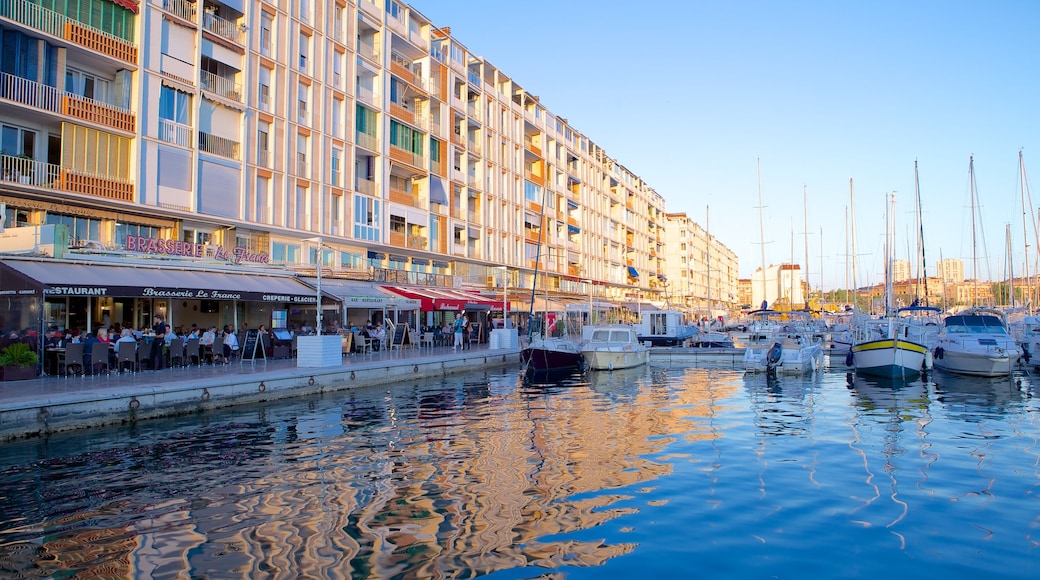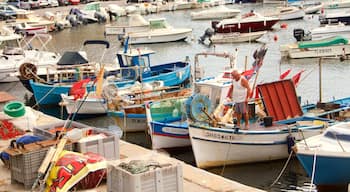The pedestrian quarter of this historic Mediterranean port town is home to several well-restored fountains, interesting squares and a variety of shops.
A major transportation hub for Côte d'Azur, Old Town Toulon is often overlooked by tourists. Take the time to explore and you’ll be rewarded with exquisitely sculpted fountains, medieval streets packed with appealing terrace cafés and interesting shops.
Extending north of the harbor, the Old Town district dates back to the Middle Ages. Over successive centuries, French monarchs increased the military defenses of Toulon port, establishing it as a major French naval base. This part of the city suffered major damage during World War II, but many of its prominent monuments have now been restored.
Walk along the promenade near the harbor and watch boats pulling into port. Investigate the Génie de la Navigation bronze sculpture by Louis-Joseph Daumas. Note how the figure’s finger points to the sea and its posterior faces the city, hence its local nickname, Cuverville, a play on the expression “cul vers ville,” which means “ass to city.”
Relive Toulon’s naval history at the Musée National de la Marine. Look for the Tour de l’Horloge clock tower inside the naval base, which was originally used as a lookout post.
Venture farther inland through Old Town’s labyrinth of narrow streets. Watch for architectural landmarks, including the Toulon Opera House, the 18th-century Church of Saint Louis, Toulon Cathedral and Hôtel de Ville, which is decorated with intricate Baroque carvings. Seek out stunning fountains on Place de la Liberté and Place Puget.
Head to Quai Stalingrad to shop or walk through the colorful morning food market on Cours Lafayette, where you can experience the smells and flavors of Provençal cuisine. Some of the best times to visit Toulon Old Town are during the Toulon Jazz Festival in July and the Bacchus food and wine festival in March.
Toulon Old Town is compact and suitable for walking. It makes an ideal base from which to explore the rest of the French Riviera or to visit Corsica, with ferries departing from the harbor.




















